September 17th, 2011
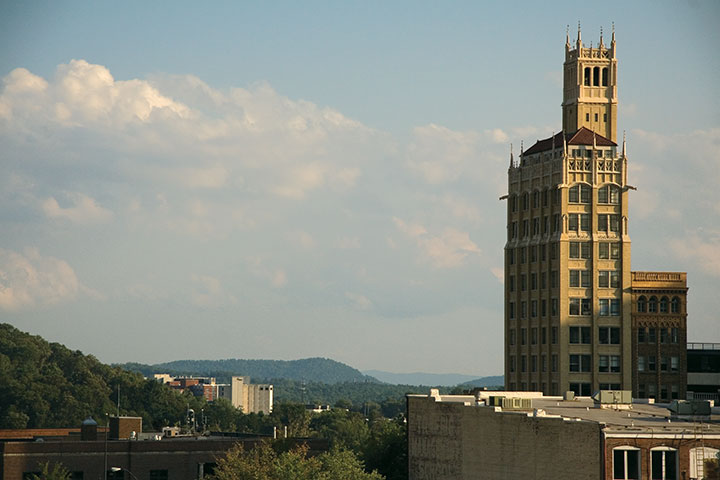
Many of my favorite towns (Boulder, Missoula, Portland, the other Portland, Duluth, Tacoma, Providence, etc.) seem to be kindred spirits to one another. There’s something about the coming-together of historic architecture, blue-collar grittiness, a population full of creative types and surrounding natural beauty that … well, for which I’m a total sucker. So based on all the reports over the years I’ve had about Asheville, I knew it was going to be my kinda place.
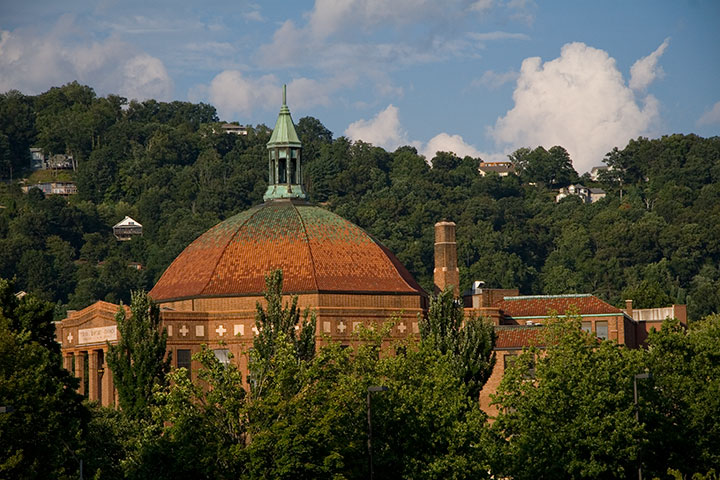
When Jessica and I were there last month for the Ladies of Letterpress Conference, we made sure to give ourselves plenty of extra time to go exploring.
Asheville is nestled in the thick of the Blue Ridge Mountains, which turned nearly every direction we looked into a beautiful panorama.
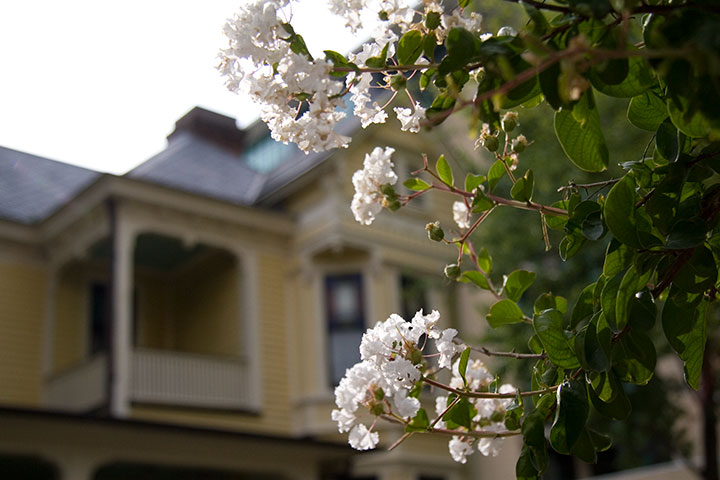
The lush, southern climate gave us the feeling that we were walking through an urban greenhouse. Everything was in full bloom and living color.
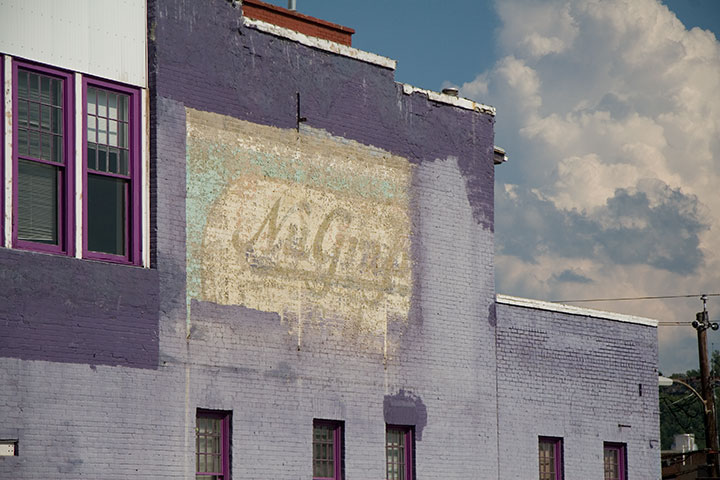
The city’s history is visible around every well-preserved corner.
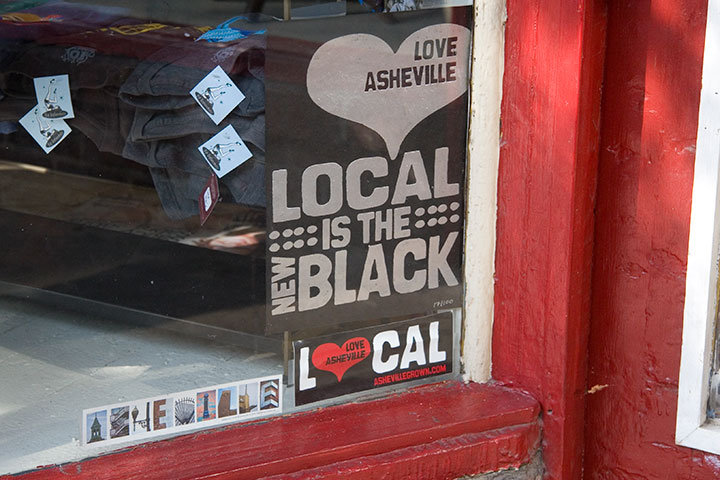
Unfortunately, that preservation is often an accidental outcome in towns that are slowly withering—but that was far from the case here. Despite an economically troubled past, Asheville is a vibrant, active city, complete with a fierce sense of local pride. We saw some variation of these signs in every shop and restaurant window, over and over again. (Hint, hint, Tacoma!)
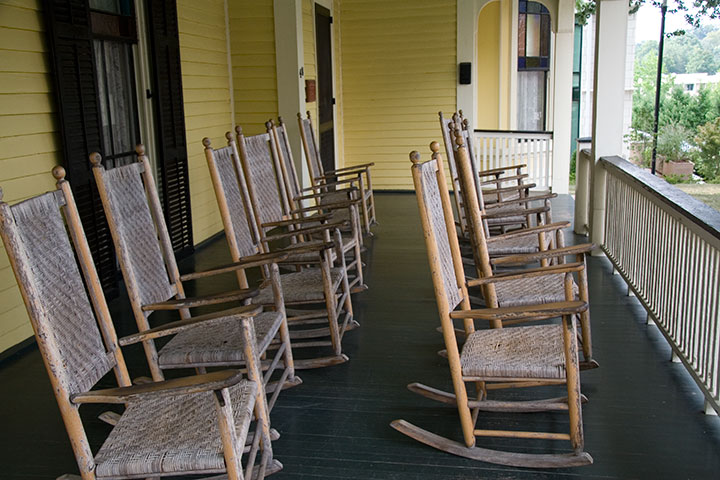
But above all, there was a comfortable sense of down-home warmth in every quarter. Everyone we met was sweet as pecan pie, and the whole place seemed to invite us to settle in and relax. And the rocking chairs! I swear, we saw them everywhere—even at the airport! That’s a tradition I can get behind—I mean, sit down upon.
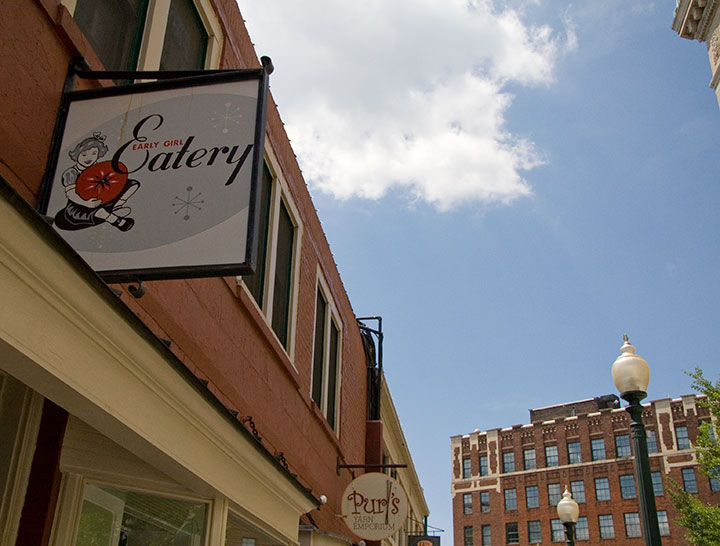
I could go on and on all day about Asheville’s charms as a city, but what I really want to talk about is the food. Oh, the food. And I know that saying so doesn’t exactly make me your typical Yankee, but I have a real thing for Southern cuisine. And after trying a new restaurant at every interval for five days, I’m convinced that it’s nigh impossible to have a bad meal in Asheville.
I’ll never understand the point of chain restaurants. When I travel, I’m not interested in the generic food you can get anywhere in America—I want local flavor. When in Rome, you know? So whenever I’m in a new place, I usually order whatever the restaurant is particularly known for, which is often some sort of local specialty. It’s never steered me wrong yet.
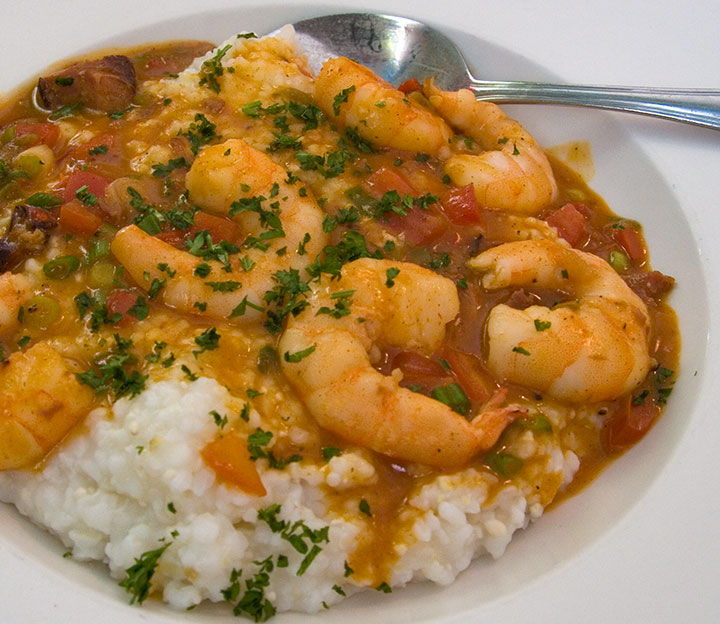
So at the Early Girl Eatery, I had the shrimp n’ grits. What’s more Southern than that? And more importantly, what could possibly be more tasty? As if that weren’t enough, the garnish on the grits was the fact that everything on the menu was locally source, and whenever possible, organic. Plus, they served the real, no-kidding, hard-core stone-ground coarse grits—the ones the Tailor and I love so much that we actually order them from a North Carolina mill and have them shipped out west as one of our staple grains. (Yes, I know we’re weird.)
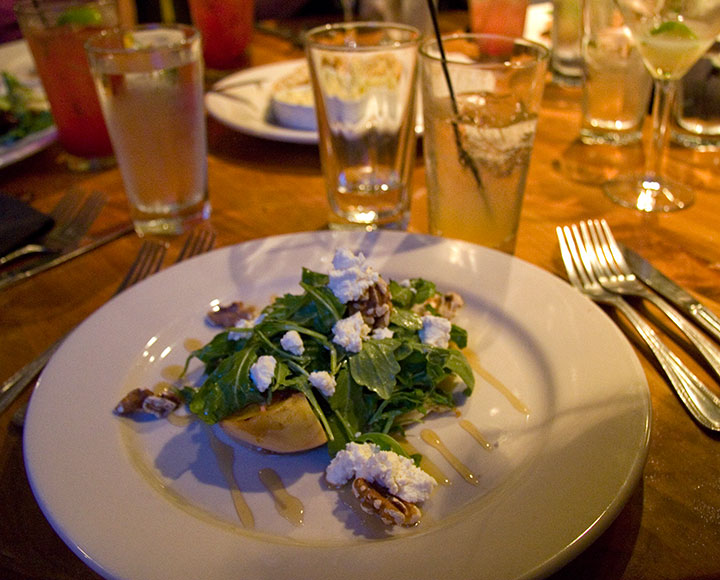
The Southern boasted both local and seasonal fare (and terrible lighting for photographs, sorry), and their peach, pecan, goat cheese and honey salad was like summer on a plate.
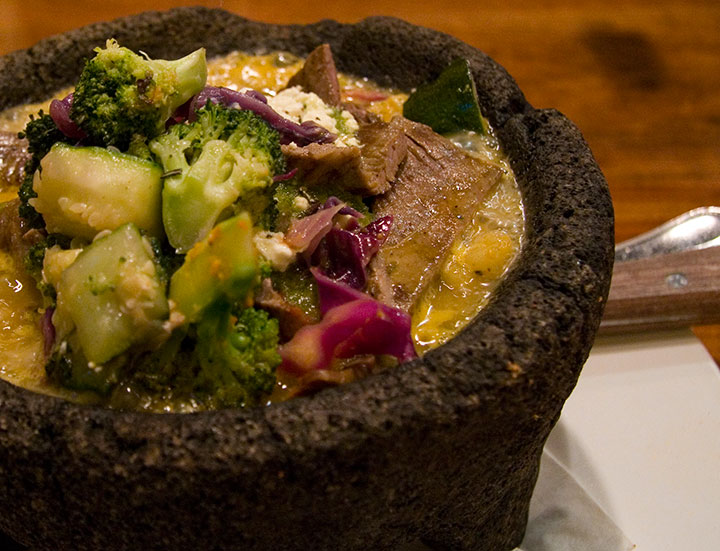
When a large group of letterpress folks joined us at Salsa’s, Southern cookin’ wasn’t exactly on the menue, but I stuck with my rule-of-thumb about the house specialty, and as usual, it was the right choice. This time I ordered their famous molcajete, a traditional Mexican mortar-and-pestle carved out of basalt, heated to something like earth-core temperatures, and filled with a molten and unbelievably delicious stew. The secret ingredient was goat cheese again, which is always a-okay with me. Besides, for someone who loves nerdy scientific things like specific heat, this dinner took the cake—even though it was nearly an hour before I could eat it without my face melting.
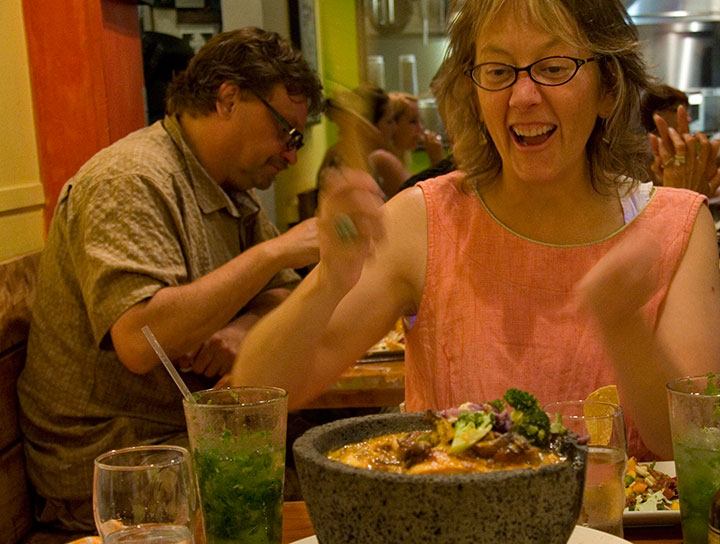
(Jessica was a fan of the molcajete, too.)
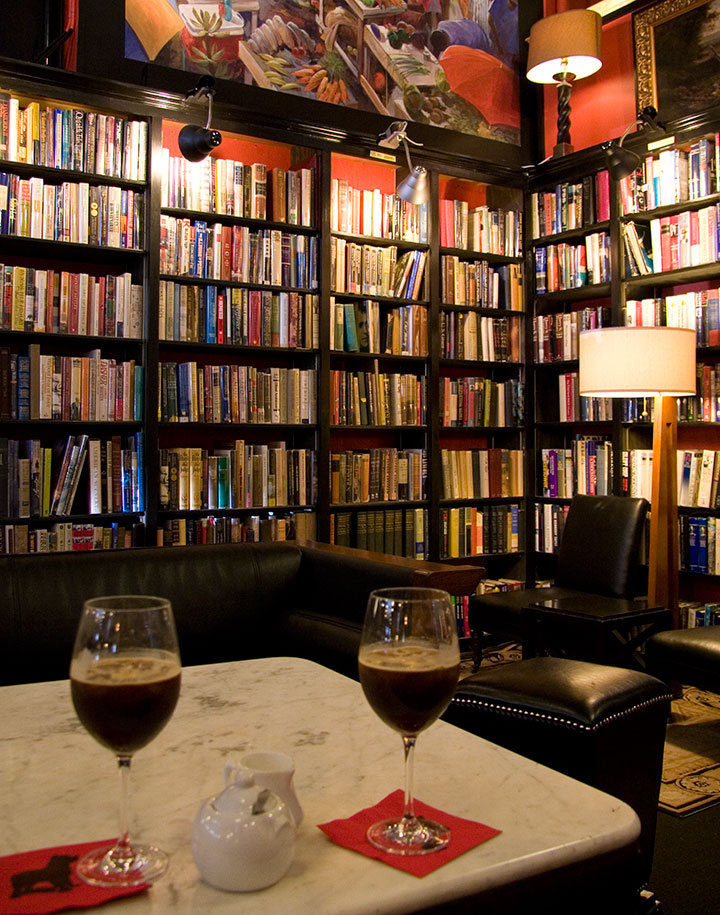
Now, I like lemonade, sweet tea and unsweet tea as much as the next gal, but I’ve always been a coffee drinker. And after three years as a transplanted Northwesterner, I’m a total convert to the coffee culture; a late-morning walk just doesn’t feel right without a cuppa. It was 95 muggy degrees outside, so an iced Americano hit the spot—and at the Battery Park Book Exchange, they’ll serve it to you in snazy wine glasses and let you while away the whole caffeinated day paging through the impressive North Carolina section.
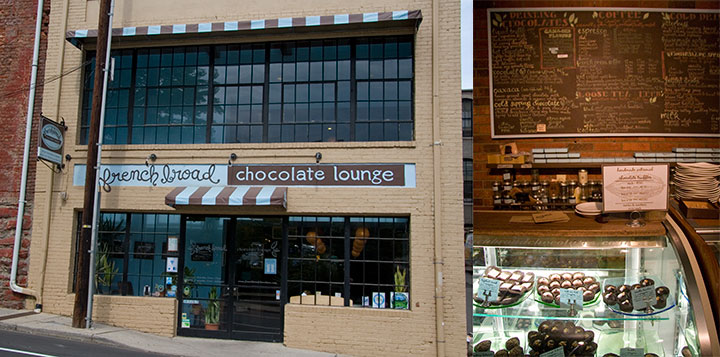
One of the people we befriended at the conference is an Asheville native who let us in on the secret about where to get the best dessert in town. Handmade chocolates. ‘Nuff said.

Still, it was the Southern classics I was the most hungry for—like this gigantic sweet potato pancake at the Tupelo Honey Cafe. It came garnished with spicy pecans and escorted by a side of grits with—you guessed it—goat cheese. Like nearly every other meal I had in Asheville, it was light and deftly made (though impossible to finish!), and completely unlike the heavy, greasy stereotype people have in their heads. With each bite I was more and more baffled by the idea that anyone could dislike Southern food.
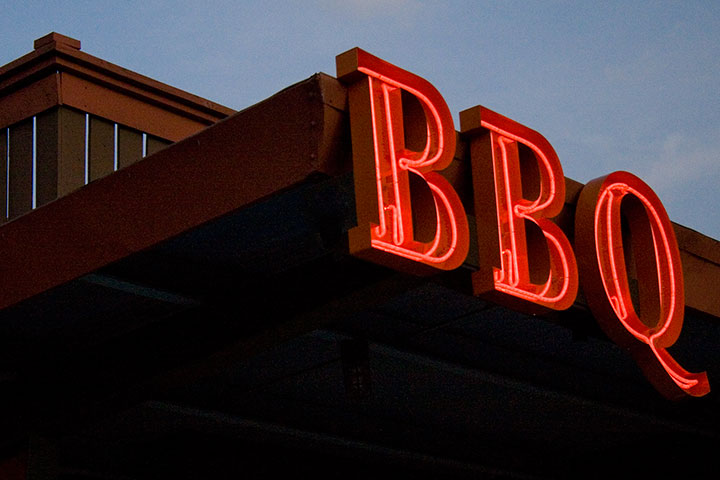
Of course, no sojourn below the Mason-Dixon Line would be complete (for omnivores, at least) without a taste of authentic, heart-attack-inducing Southern barbeque. To get our fix, Jessica and I headed for Luella’s.
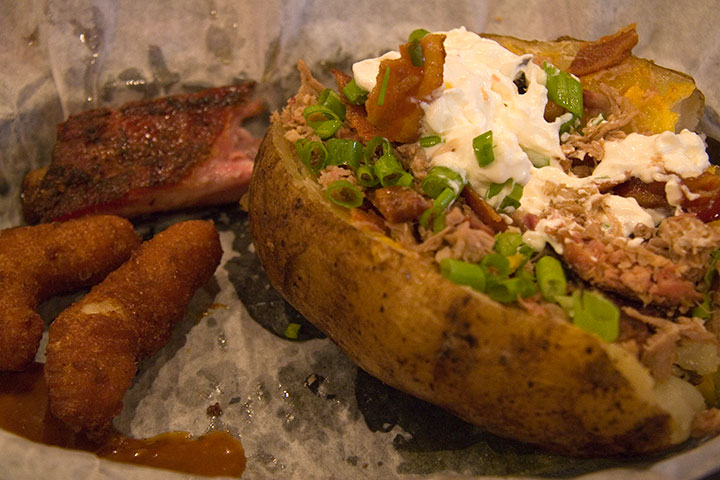
Neither of us could decide, so we ended up eating family-style and sharing everything. I picked the giant stuffed baked potato with everything plus the kitchen sink and a coronary on top (shown here with a bit of Jessica’s spare ribs). Which was fantastic, truly, but it was the hush puppies that stole the show. Best. Freaking. Hush puppies. Ever. I think the secret is in the shape—greater crispy-to-fluffy ratio. Yum.

But my favorite meal of the trip was one that will probably live in my all-time top ten forever: fried-green-tomato eggs Benedict (with a side of grits, natch!) at the Over Easy Cafe. I still dream about that one.
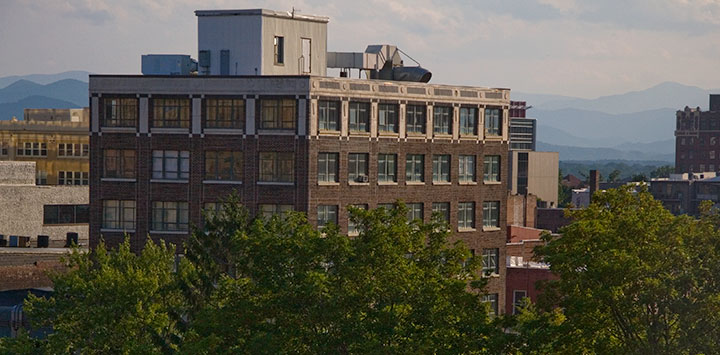
I’m also still dreaming of that blue haze. Whether it’s for the local flavor or the letterpress gals, the hush puppies or the hills, you can bet I’ll be back.
August 11th, 2011
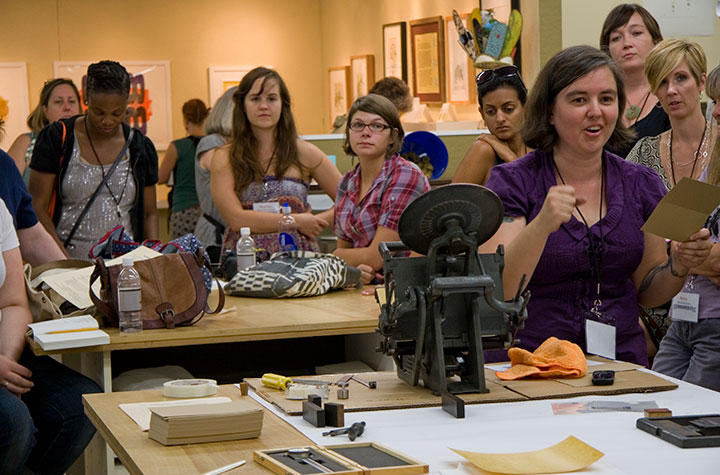
Virginia Woolf said that “a room of one’s own” was essential for women to do creative work—so imagine what 150 women could do with such a room. Jessica and I got to unveil our newest broadside at the first-ever Ladies of Letterpress Conference in Asheville, NC, where we were asked to speak about our series. It was unbelievably inspiring to stand in a room full of heavy equipment—
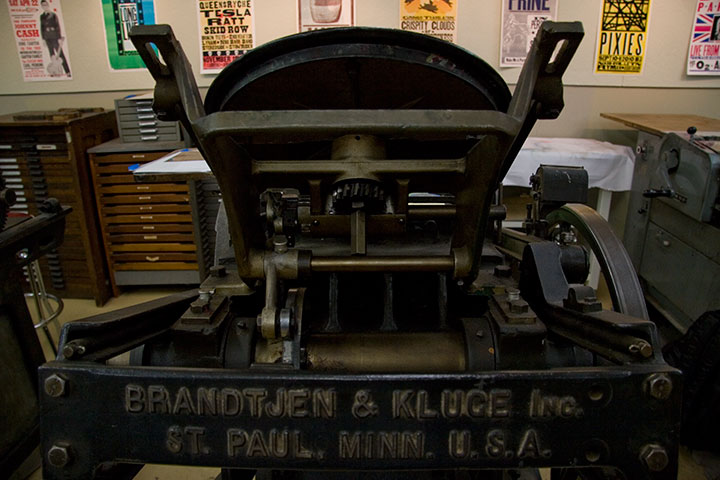
and even more exciting to help our fellow lady printers turn that room into a powerhouse. The conference was a smashing success, and we were both surprised and heartened to discover just how many of us are out there.

The three days of LofLCon were jam-packed with panel discussions, demos and presentations with the most prominent and skilled members of the letterpress community;

an exhibition to introduce us to a vast array of talent;

and a whole lot of hard-won know-how—like when to salvage an old press, and when to hold a funeral. (Sigh.)
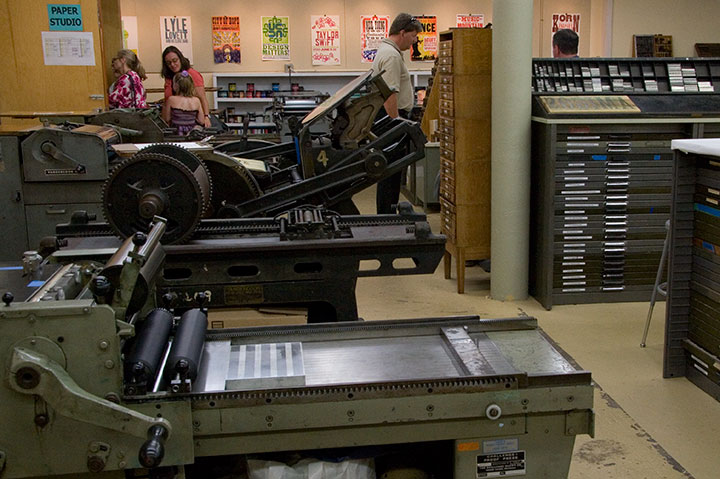
Absorbing letterpress goodness by osmosis was wonderful—
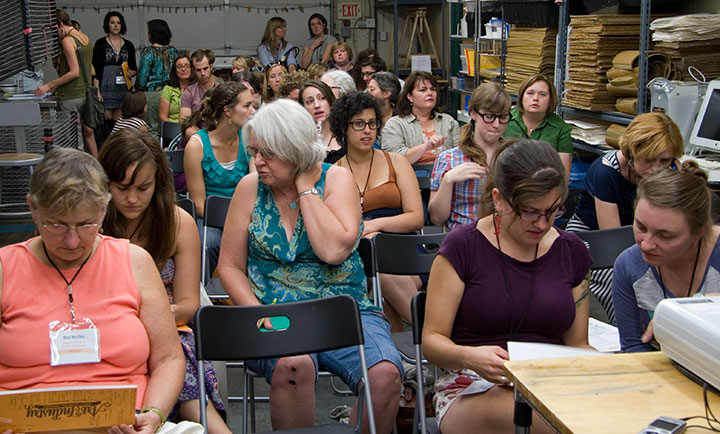
—but the best part was meeting dozens of long-admired artists and brand-new, fresh faces alike.
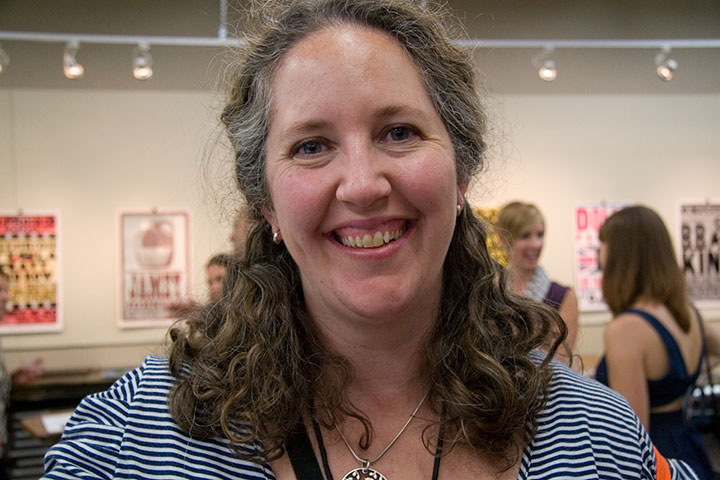
And then there was the joy of running into old friends—look who it is! It’s the lovely Allison from Igloo Letterpress, one of my favorite partners in crime!
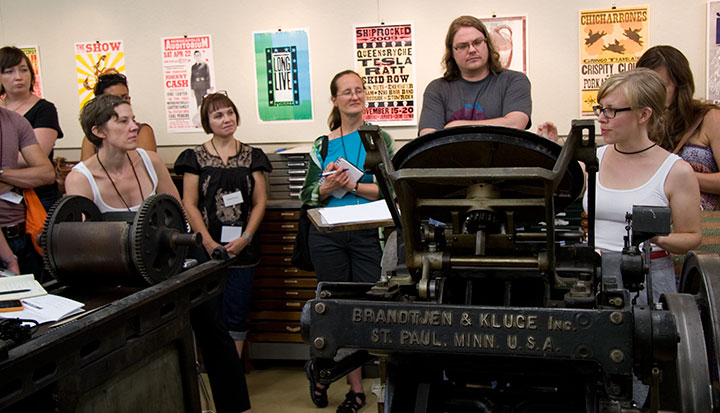
I can’t express enough how excellent the weekend was—Jessica White and Kseniya Thomas (pictured here in white, giving a die-cutting demo on the platen press) deserve a standing ovation for organizing such a fabulous event, and wrangling so many printers to make it happen.
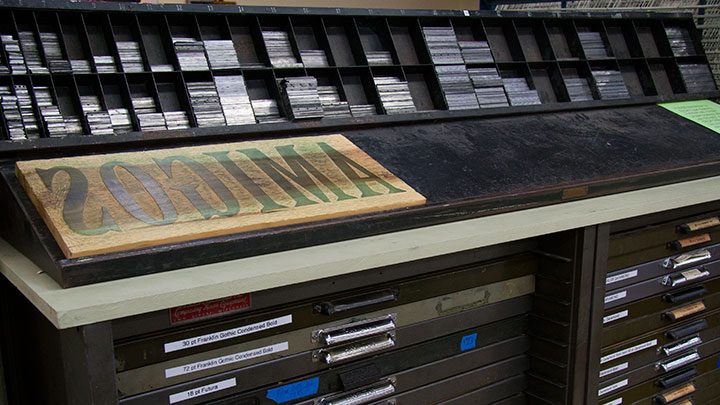
And for those hundred-plus people who shoehorned themselves into that tiny space to attend our Dead Feminists talk, we can’t thank you enough. Your support and enthusiasm for what we do was completely overwhelming—and it was so much fun to be able to get technical with y’all! (Sorry, the accent rubbed off a bit.)
One more thing: I know it somehow didn’t come across in my photos, but we were blown away by the sheer number of feminist fellas who came out of the woodwork and outed themselves as fans of the series. We love you guys—you make us feel like we must be doin’ something right. And thanks to the conference, we’re fired up and ready to get back to work.
August 10th, 2011
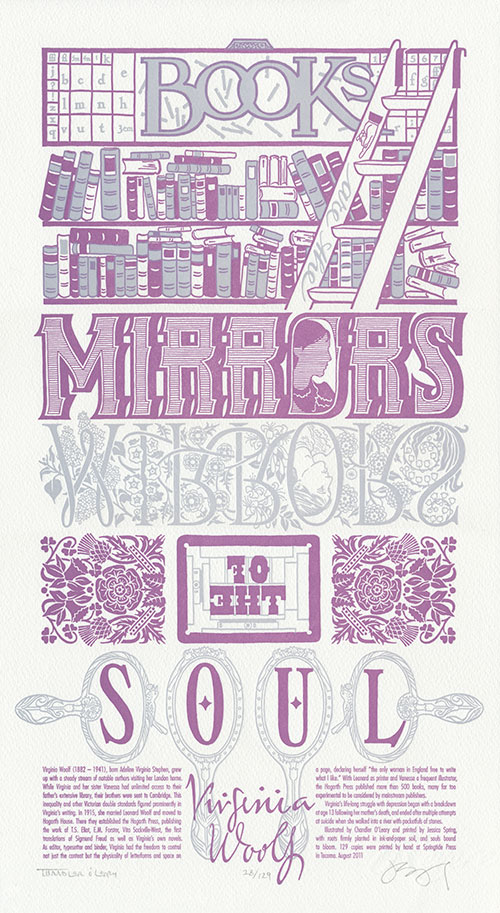
Jessica and I are back from Asheville, with fresh memories of hazy heat and sweltering summer on our minds. Back home in Washington, however, we’re having the kind of chilly summer that demands a cozy sweater, a cup of tea and time spent curled up with a good book (and thanks to our sojourn in the South, we want to do that curling up in a rocking chair!). The news of bankrupt corporate bookstores and dire warnings of an electronic apocalypse swirl around us as we read. Yet the world contained between a pair of unassuming cloth covers begs to differ. The e-readers and tech gadgets of the world are carving out their niche—but we breathe a contented sigh at the simple truth that books are here to stay. In honor of the tactile power of fresh ink and crisp pages, we’ve shared our composing stick with a fellow letterpress printer, the celebrated English author Virginia Woolf:
Books are the mirrors of the soul.

Paper Chase is teeming with letterpress references and the tools of Virginia’s trade. A type case helps sort the problem of minding one’s Ps and Qs, while an inked-up chase (an inside joke for our fellow printers) is locked and loaded and ready to print. Above that is a staple of any writer: a messy bookshelf overflowing with stacked volumes.

Reflected in the mirror of Virginia’s work is the beauty—and sadness—that veils her prose. Ghostly silver ink floats like a lingering afterimage, and an ethereal garden blooms from spectral soil. Lilacs and lilies, thistles and honeysuckles take root—each planting a seed of meaning from the Victorian tome The Language of Flowers. Do a little digging and discover layers of rich symbolism that reveal the woman behind the words.
And for those of you who are into historical printers like we are, there’s an extra little goody hidden in the hand mirrors: a nod to another great Victorian printer and Renaissance-person, William Morris. And if you know your floral national emblems (hint: look for the rose!), you’ll discover a link to both Virginia’s and William’s homeland.

We’ll be donating a portion of our proceeds to the Independent Publishing Resource Center in Portland, Oregon, a non-profit organization that provides individual access to the resources and tools required for the creation of self-published media and art. The IPRC offers workshops, digital technology for writing and design, a research library, and even a letterpress print shop and bindery to aid in the publication of original work.
We think Virginia—and anyone else who loves making an impression—would be proud.
• • • • • • • • • • • • • • • • • • • • • • • • • • • • • • • • • • • • • • • • • • • • • • • • • • • • • • • • • • • •
Paper Chase: No. 13 in the Dead Feminists series
Edition size: 129
Poster size: 10 x 18 inches
Printed on an antique Vandercook Universal One press, on archival, 100% rag paper. Each piece is numbered and signed by both artists.
Colophon reads:
Virginia Woolf (1882 – 1941), born Adeline Virginia Stephen, grew up with a steady stream of notable authors visiting her London home. While Virginia and her sister Vanessa had unlimited access to their father’s extensive library, their brothers were sent to Cambridge. This inequality and other Victorian double standards figured prominently in Virginia’s writing. In 1915, she married Leonard Woolf and moved to Hogarth House. There they established the Hogarth Press, publishing the work of T.S. Eliot, E.M. Forster, Vita Sackville-West, the first translations of Sigmund Freud as well as Virginia’s own novels. As editor, typesetter and binder, Virginia had the freedom to control not just the content but the physicality of letterforms and space on a page, declaring herself “the only woman in England free to write what I like.” With Leonard as printer and Vanessa a frequent illustrator, the Hogarth Press published more than 500 books, many far too experimental to be considered by mainstream publishers.
Virginia’s life-long struggle with depression began with a breakdown at age 13 following her mother’s death, and ended after multiple attempts at suicide when she walked into a river with pocketfuls of stones.
Illustrated by Chandler O’Leary and printed by Jessica Spring, with roots firmly planted in ink-and-paper soil, and souls bound to bloom.
UPDATE: poster is sold out. Reproduction postcards available in the Dead Feminists shop!
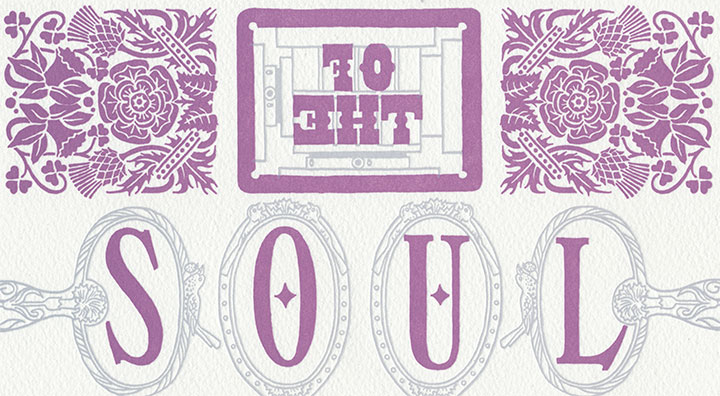
August 3rd, 2011
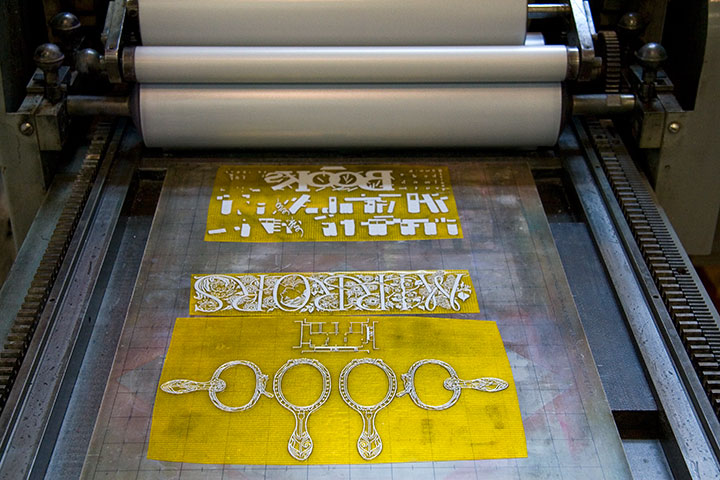
Whew. I’m home from one adventure, but I’m about to turn right around and go off on another. There was just enough time between trips to do a little scribbling, a little scrambling—and maybe a wee bit of nervous screaming as the seconds counted down.
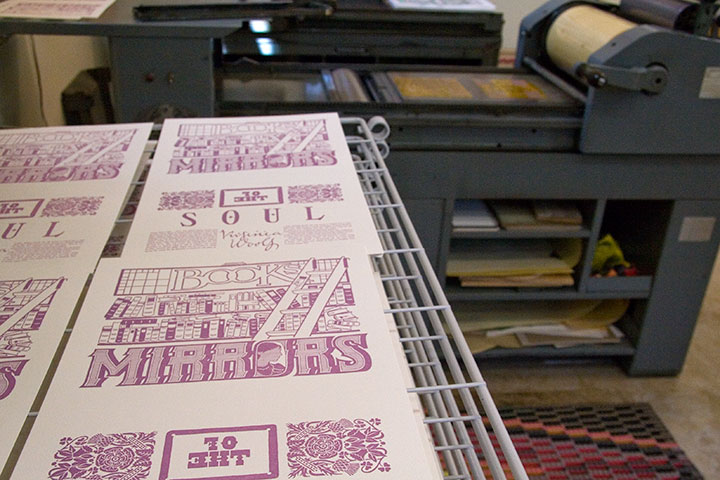
We made it, though—and now, on this summer that’s had me scattered to the four winds, there’s just one compass point left to explore. So Jessica and I are off to Asheville, NC for the first-ever Ladies of Letterpress Conference, finished goodies in hand. When we come back next week, we’ll have a new broadside for you and a whole lot of tales to tell.
Happy trails!

![Chandler O'Leary [logo]](https://chandleroleary.com/wp-content/themes/chandleroleary/images/logo.png)

































